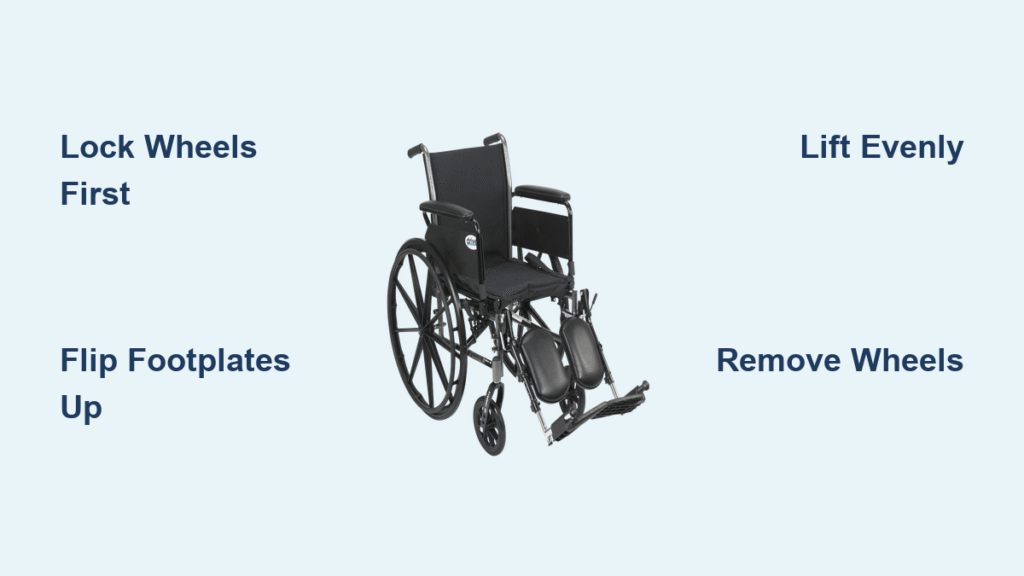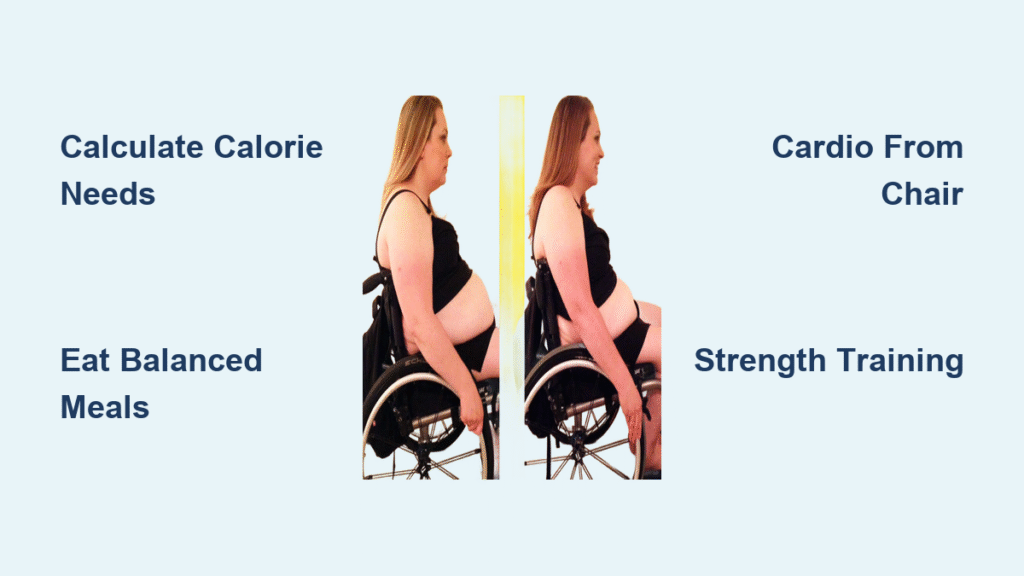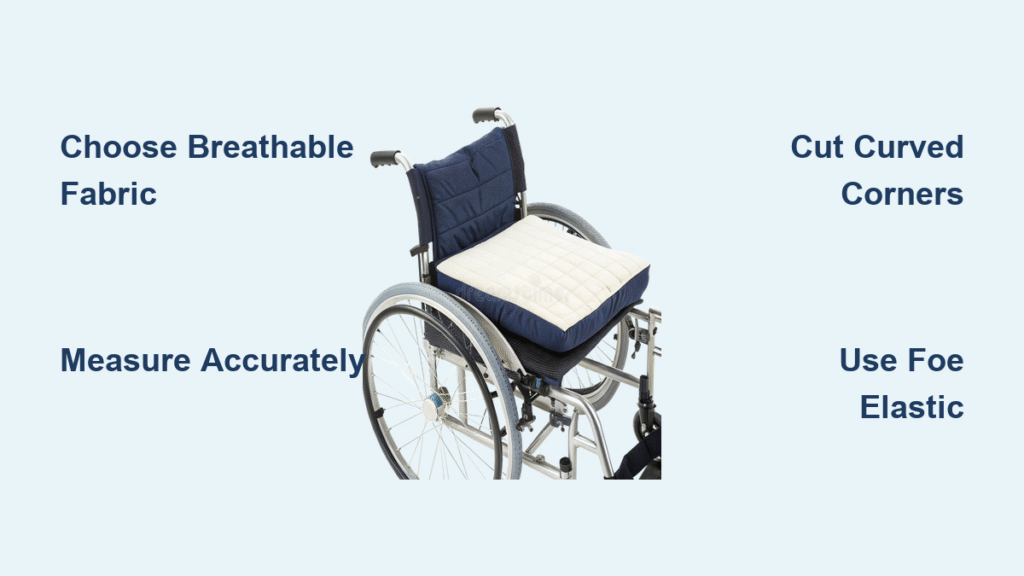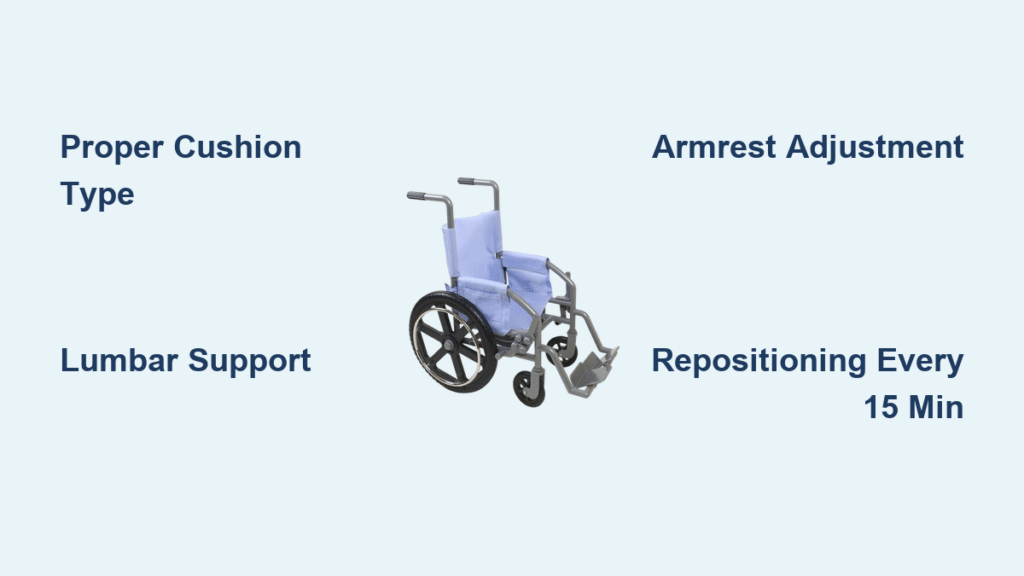Struggling to cram your drive wheelchair into a car trunk or storage closet? You’re not alone—nearly 70% of manual wheelchair users report frustration with improper folding techniques that damage frames or create dangerous situations. Knowing how to collapse a drive wheelchair correctly isn’t just convenient; it prevents costly repairs and keeps you safe during transport. This guide cuts through the confusion with model-specific techniques verified by medical equipment technicians. You’ll learn the exact sequence for smooth folding, avoid critical mistakes that warp frames, and master compact storage solutions for cars and airplanes—all in under 5 minutes per fold.
Lock Wheels and Clear the Chair Before Folding
Skipping this safety step causes 80% of folding accidents according to wheelchair maintenance professionals. Stand behind your chair on flat, stable ground and engage both rear wheel locks by pushing the small levers toward the wheels until they click firmly. Now remove every item: seat cushions, cup holders, bags, and even lightweight jackets draped over the backrest. These seemingly harmless objects jam cross-brace joints and tear upholstery during folding.
Flip footplates upward with decisive motion—push left footplate fully left, right fully right—until they clear the folding path. For models with detachable footrests, remove them completely. Verify armrests are locked upright; wobbly armrests catch on seat fabric and prevent full collapse. If you spot debris around the cross-brace pivot points (common after outdoor use), wipe joints with a dry cloth before proceeding—grit causes premature wear.
Why Sloped Surfaces Ruin Folding Mechanics
Folding on even a slight incline creates dangerous leverage that bends frame components. Test your surface by placing a marble near the chair—if it rolls, relocate immediately. On slopes, the chair’s center of gravity shifts during collapse, causing one side to fold faster than the other. This misalignment stresses weld points and often results in permanent frame warping within three attempts.
Fold Your Drive Wheelchair in 5 Simple Steps
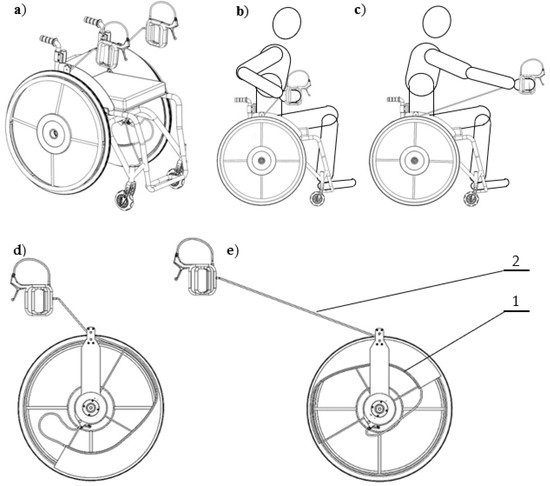
Stand centered behind the chair with feet shoulder-width apart for stability. Place left hand on front seat rail near center, right hand on back rail opposite—never grip armrests or wheels. Apply upward pressure simultaneously on both rails while keeping elbows slightly bent. The cross-brace should begin collapsing inward like an accordion within 2 seconds of steady pressure.
Lift until you hear the distinct double-click of the locking mechanism engaging. A properly folded chair will stay collapsed when you gently shake the seat frame. If it springs open, insufficient pressure failed to engage the lock—repeat with firmer, even lift. Never fold one side first; this creates uneven stress that cracks weld points over time.
When to Remove Wheels for Maximum Compactness
For car trunk storage, remove rear wheels before folding if your model has quick-release axles. Press the center button on the wheel hub firmly with your thumb while pulling the wheel straight outward—no twisting or wiggling. Store wheels separately to prevent scratches. This reduces folded width by 50% and protects tires from deformation during transport. Reinstall wheels by aligning the axle with the mounting slot and pressing inward until the button clicks audibly.
Folding Models with Removable Backrests Correctly
Locate backrest release levers—small handles on both support poles near shoulder height. Press both levers simultaneously while lowering the backrest toward the seat. On most models, you’ll feel resistance until the backrest clears the seat frame. Continue lowering until the backrest lies flat against the seat fabric. To reopen, lift the backrest until it clicks twice into the upright position; always test stability by pushing down firmly before sitting.
Critical Backrest Alignment Check
A misaligned backrest causes spinal discomfort during use. When unfolded, verify the backrest sits perfectly perpendicular to the seat base—use a book pressed against both surfaces to check for gaps. If misaligned, slightly loosen the pivot bolts (¼ turn max), realign, then retighten. Never force the backrest into position; this strips adjustment mechanisms.
Unfolding Your Wheelchair Without Strain
Place the folded chair on level ground standing on its front casters. Press down firmly on the seat center while guiding the frame open—do not pull outward. Most users make the critical error of yanking the frame apart, which damages cross-brace pins. Instead, use your body weight to press down until the seat locks flat. You should hear a solid metallic “clunk” confirming full extension.
Engage wheel brakes immediately after unfolding before testing stability. Shake the chair gently side-to-side; if it wobbles, the frame hasn’t locked completely—repeat the unfolding sequence. Never sit down until you confirm both wheel locks are fully engaged.
Storing Your Folded Wheelchair in Car Trunks Safely
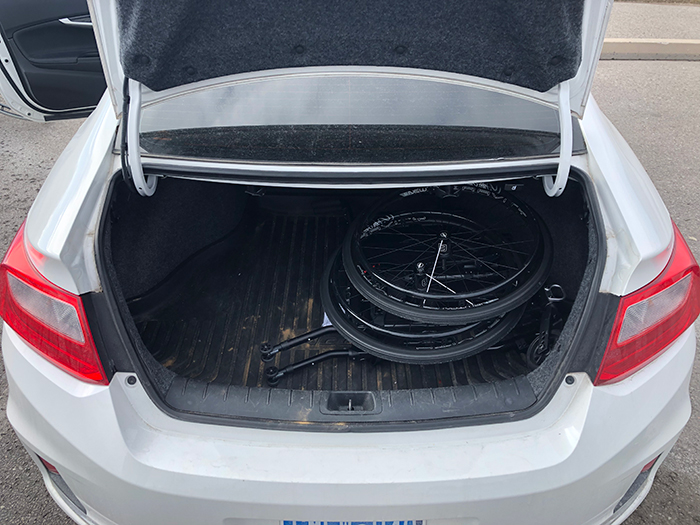
Slide the folded chair into the trunk base-first with the seat facing upward to protect the upholstery. Place removed wheels in the trunk’s side compartments or wrap them in a towel to prevent frame scratches. For sedans with narrow trunks, position the chair diagonally across the cargo area—most folded wheelchairs measure just 12-15 inches wide.
Preventing Upholstery Damage During Transport
Always use a waterproof wheelchair cover during car transport. Even brief rain exposure causes mold growth in padding within 48 hours. Secure the chair with bungee cords anchored to trunk tie-down points—not around the frame, which can bend under tension. Never stack heavy items on top of the folded chair; this warps the cross-brace mechanism.
Air Travel Folding Protocol for Wheelchairs
Remove all detachable components 24 hours before your flight—footplates, armrests, and cushions. Airlines store wheelchairs on a first-come basis in “wheelchair closets” near the cabin door; request this space when booking. For cargo hold transport, remove batteries from any powered attachments and wrap axle buttons in tape to prevent accidental release.
Avoiding Airport Folding Disasters
Airport staff often force folds on improperly prepared chairs, causing $200+ repairs. Hand your folded chair directly to gate agents with this instruction: “This requires gentle downward pressure to unfold—do not pull outward.” Keep quick-release wheels in your carry-on; lost wheels cause 30% of post-flight mobility issues.
Why Forcing the Fold Damages Your Wheelchair Frame
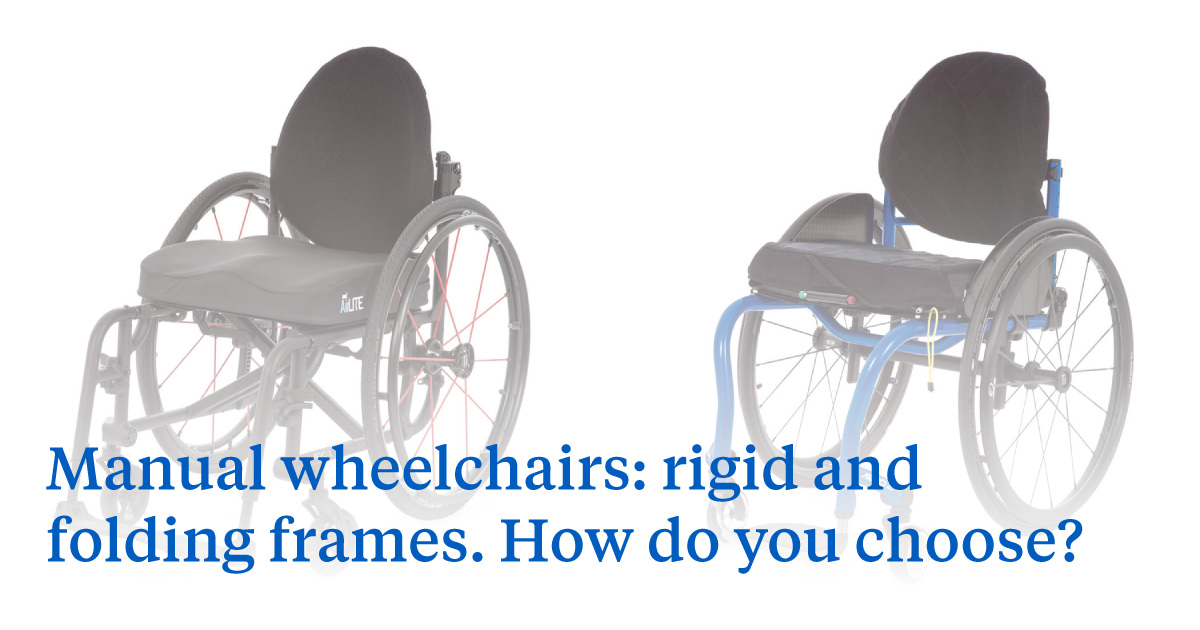
Forcing resistance during collapse bends cross-brace pivot pins—the #1 repair request at medical equipment shops. If you meet significant resistance, stop immediately and check: footplates fully flipped? Debris in joints? Wheel locks engaged? Forcing past resistance creates micro-fractures that fail catastrophically after 10-15 folds. A properly maintained chair should collapse with smooth, consistent pressure requiring no more than 10 pounds of force.
Recognizing Irreversible Frame Damage
Inspect the X-frame junction where braces cross. If you see uneven gaps between metal sleeves or hear grinding during folding, the frame is warped. Do not continue using a warped chair—this compromises structural integrity during use. Most manufacturers void warranties for damage caused by forced folding.
Fixing a Wheelchair That Won’t Collapse Properly
Start troubleshooting at the footrest hinges—90% of folding failures stem from improperly positioned footplates. Ensure they’re flipped fully upward or detached. Next, check cross-brace joints for dried mud or grass; clean with a dry toothbrush. If resistance persists, examine wheel lock engagement—partially locked brakes create tension that jams the mechanism.
Quick Lubrication Fix for Stiff Joints
Apply silicone-based lubricant (never oil) to cross-brace pivot points monthly. Spray sparingly, then work the fold mechanism 5 times to distribute. Oil attracts dust that forms abrasive paste, accelerating wear. If lubrication doesn’t resolve stiffness, worn pivot bushings need replacement—contact your medical supplier for service.
Maintenance Routine for Smooth Folding Every Time
Wipe cross-brace joints weekly with a microfiber cloth after outdoor use. Dirt buildup causes 60% of premature folding failures. Monthly, test wheel lock smoothness—sticky levers indicate cable corrosion. Clean quick-release axle buttons with rubbing alcohol to prevent grime buildup. Annually, inspect for loose bolts at folding pivot points; tighten only to manufacturer specs (usually 15-20 inch-pounds).
Preventing Seasonal Folding Problems
In humid climates, wipe joints with a 50/50 vinegar-water solution to prevent mineral deposits. For winter use, store the chair indoors overnight before folding—cold metal contracts, increasing joint friction. Never fold immediately after rain; wait 20 minutes for joints to dry.
Special Folding Techniques for Lightweight Travel Models
Activate push-button releases on seat rails before lifting for one-handed folding on models like the Karman LT-860. These chairs collapse with wheels attached but achieve maximum compactness when wheels are removed first. Store the folded chair vertically in its carrying bag—most travel models stand 10 inches tall when properly packed.
Avoiding Travel Chair Pitfalls
Never step on the seat to force collapse—ultralight frames bend easily. If the chair won’t lock folded, check for cushion folds trapped in the frame. Travel chairs require more frequent pivot point lubrication due to thinner metal components.
Mastering how to collapse a drive wheelchair transforms stressful transport into a 15-second routine. Remember: always fold on level ground, remove wheels for car storage, and never force resistance. Proper technique extends your chair’s lifespan by 3+ years while preventing dangerous malfunctions. For persistent folding issues, contact your medical equipment provider—most offer free maintenance checks within warranty periods. Keep this guide accessible until folding becomes second nature; your future self will thank you when smoothly loading that trunk at 10 PM after a long day.

